Great White Shark (aka Peacemaker, White Shark)
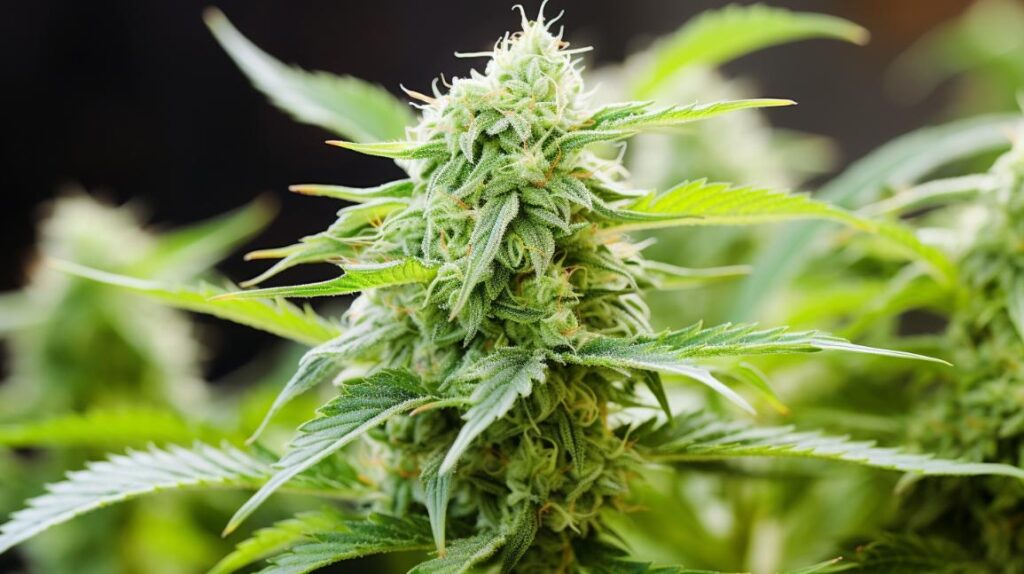
The Great White Shark strain, a distinguished indica-dominant hybrid, commands attention within the cannabis community for its robust potency and distinctive therapeutic benefits. Characterized by its impressive THC concentration of approximately 22.94% and a modest CBD level of 0.18%, this strain emerges as a formidable contender in pain management realms.
Originating from a lineage that includes the acclaimed Super Skunk, it boasts an intriguing terpene profile that gives rise to its earthy, sweet, and subtly fruity flavor notes. Cultivators appreciate its indoor growing compatibility, with a flowering cycle of nine weeks and the potential for generous yields. Furthermore, its accolade as the winner of the Bio HTCC 1997 underscores its esteemed status.
As we navigate through its genetic makeup, therapeutic applications, and the nuances that set it apart from similar strains, one cannot help but ponder the intricate balance of science and nature encapsulated in the Great White Shark strain.
What additional insights and discoveries lie within its storied history and its contribution to both recreational and medicinal cannabis use?
Genetic Lineage
Diving into the genetic lineage of the Great White Shark strain reveals a meticulously crafted hybrid, composed of 20% Sativa and 80% Indica, derived from its parent strains: Super Skunk, Brazilian, and South Indian. This genetic composition showcases a deliberate blend aimed at achieving a specific phenotype that maximizes therapeutic efficacy while ensuring a robust growth profile suitable for diverse cultivation environments.
The crossbreeding process that led to the creation of the Great White Shark strain began with the combination of Super Skunk and Brazilian strains, a pairing that introduced a complex array of terpenes and cannabinoids into the genetic pool. This initial crossbreeding phase aimed to harness the vigorous growth patterns and potent psychoactive profiles inherent in both parent strains.
Subsequently, the resulting hybrid was further crossed with a South Indian strain, a move that introduced a significant Indica influence into the mix. This step was crucial in enhancing the strain’s physical relaxation effects and bolstering its resin production capabilities.
The strategic selection of Super Skunk X Brazilian and Brazilian X South Indian in the strain’s development underscores a targeted approach towards achieving a balance between therapeutic potential and cultivation efficiency. This lineage not only underscores the scientific rigor involved in cannabis breeding but also highlights the intricate relationships between genetic heritage and phenotypic outcomes.
THC/CBD Content
Having explored the genetic lineage of the Great White Shark strain, we now turn our attention to its THC and CBD content, key factors in its psychoactive and therapeutic properties.
The THC level of this strain varies significantly, with concentrations ranging from 15% to a robust 22.94%. This variance underscores the strain’s potent nature, making it especially suitable for consumers with a high tolerance for THC.
Despite its potency, the Great White Shark strain maintains a relatively low CBD content of approximately 0.2%. This minimal presence of CBD, juxtaposed with the high THC levels, accentuates the strain’s capacity to induce a strong buzz and uplifting, productive effects.
Scientific analysis reveals that the Great White Shark’s THC potency is slightly lower than average when considering the upper echelons of high-THC strains. However, its effectiveness in generating a long-lasting body high positions it as a potentially valuable option for medicinal applications, particularly in the realm of chronic pain management.
The low CBD content further emphasizes the strain’s psychoactive rather than its non-psychoactive therapeutic benefits, making it a compelling choice for those seeking relief from chronic pain without the pronounced effects of CBD.
Terpene Profile
The terpene profile of Great White Shark, comprising myrcene, α-humulene, and ß-caryophyllene, plays a pivotal role in defining its distinct, earthy, and slightly fruity flavor profile. This combination not only contributes to its unique taste but also influences the strain’s therapeutic effects and user experience. The presence of these terpenes in the Great White Shark buds is indicative of its potential to offer a strong body effect, which is highly sought after by consumers looking for relaxation and relief from physical discomfort.
-
Myrcene:
-
Primary terpene found in many cannabis strains, contributing to the earthy aroma.
-
Known for its sedative and relaxing effects, enhancing the strong body effect associated with Great White Shark.
-
α-Humulene:
-
Contributes to the subtle spicy, herbal notes detectable in the strain’s aroma.
-
May help in reducing inflammation, adding to the therapeutic qualities of the strain.
-
ß-Caryophyllene:
-
Offers a peppery, woody undertone to the flavor profile.
-
Interacts with the body’s cannabinoid receptors to potentially relieve pain and anxiety, amplifying the overall strong body effect of the strain.
This complex terpene profile underscores the multifaceted nature of the Great White Shark strain, making it a preferred choice for consumers seeking both flavor and functionality.
Effects
Understanding the terpene profile of Great White Shark sets the stage for exploring its diverse effects on consumers, ranging from mood enhancement to potential therapeutic benefits. The Great White Shark strain, an 80% sativa and 20% indica hybrid, exhibits a complex interplay of effects that manifest both physically and mentally. With THC levels ranging from 15-21%, this strain induces feelings of happiness, energy, and creativity, making it a popular choice for those seeking to alleviate stress, manage pain, and combat anxiety.
However, the potency of the White Shark strain also brings potential adverse effects, including dry eyes, dry mouth, and headaches, which consumers should be aware of. The strain’s unique flavor profile, characterized by spicy/herbal, menthol, and tobacco notes, enhances the overall consumption experience, contributing to its award-winning status at the 1997 Cannabis Cup.
Scientific analysis of the White Shark strain’s effects underscores the importance of understanding individual tolerance and the potential for both positive and therapeutic outcomes. Consumers report significant mood enhancement and creativity, positioning this strain as a valuable tool in the management of stress and anxiety, while also highlighting the need for mindful consumption to mitigate less desirable effects.
Medical Uses
Exploring the Great White Shark strain reveals its significant potential in medical applications, particularly in pain management and mental health support. This cannabis variety, often abbreviated as White Shark, has garnered attention within the medical community for its therapeutic qualities. Its efficacy is not just anecdotal; several patients have reported substantial relief from a range of symptoms, underlining the strain’s medical uses.
-
Effective for pain management, providing a long-lasting body high.
-
Chronic Pain Relief: Patients suffering from chronic pain conditions have experienced considerable alleviation, making daily tasks more manageable.
-
Muscle Spasms and Discomfort: Individuals with muscle-related ailments report reduced spasms and discomfort, enhancing their quality of life.
-
Known to be beneficial for reducing stress and anxiety.
-
Mental Health Support: The strain offers potential relief for symptoms associated with mood disorders, contributing to emotional and psychological well-being.
-
Chronic Stress and Anxiety: For those battling ongoing stress and anxiety, White Shark may provide a calming effect, aiding in the management of these conditions.
The medical uses of the White Shark strain are supported by both empirical evidence and patient testimonials, making it a valuable option for those seeking alternative treatments for pain, stress, and mental health issues.
Flavor and Aroma
Beyond its notable medical applications, the Great White Shark strain also captivates with its distinct flavor and aroma, pivotal attributes that contribute to its overall appeal. The strain’s olfactory profile is marked by a bold, fruity aroma layered with skunk undertones, yielding a complex and intriguing scent. This aromatic complexity is further enhanced by sweet summer fruits and a candy-like aftertaste, creating an appealing and memorable olfactory experience.
From a flavor perspective, Great White Shark presents a multifaceted taste profile. It combines spicy/herbal nuances with notes of menthol and tobacco, delivering a diverse and captivating taste experience. The presence of sweet, earthy flavors with a hint of fruitiness adds depth, making each encounter with this strain pleasantly enjoyable. Notably, the strain’s buds evoke the essence of cookies, imbuing the flavor profile with a comforting, familiar touch.
The terpene profile of Great White Shark, dominated by Myrcene, α-Humulene, and ß-Caryophyllene, plays a significant role in shaping its flavor and aroma. These compounds contribute to the strain’s earthy, sweet, and slightly fruity characteristics, underlining the scientific basis for its distinctive sensory attributes.
Appearance
The appearance of the Great White Shark strain is distinguished by its visually striking buds, characterized by a dense layer of crystals, and accentuated with orange and brown hairs against a backdrop of light green foliage. This phenotype showcases not only the visual appeal but also hints at the potency and quality of the White Shark strain. Its cultivation and flowering time are crucial in achieving this distinct appearance, which is a testament to the grower’s expertise in employing techniques that enhance its visual and aromatic properties.
- Buds are white with a blanket of crystals outlined with orange and brown hairs.
- This coating of trichomes signifies a high cannabinoid content, promising a potent effect.
- The colorful hairs, or pistils, indicate the plant’s maturity and readiness for harvest.
- The plant has a light green color.
- This lighter hue reflects the strain’s specific genetic makeup and growing conditions.
- The flowers are dense, covered in trichomes, and have orange pistils.
- Dense flowers and trichome coverage are desirable traits, indicating a successful cultivation process.
- Techniques like Sea of Green (SoG) and Screen of Green (ScrOG) are recommended to achieve such compactness, optimizing space and light exposure hence affecting the flowering time and overall yield.
Grow Information
Cultivating the Great White Shark strain requires careful attention to its unique sativa-dominant growth characteristics and optimal environmental conditions to maximize yield and potency. This strain, being 80% sativa, has a distinctive growth pattern that leans towards a bushy, indica-like structure, making it somewhat unique in its cultivation requirements. Its short internodes and dense growth habit necessitate a spacious setup, preferably with a pot size of 30 liters or larger to accommodate its root system and allow for optimal nutrient absorption.
The following table provides a concise overview of key grow information for the Great White Shark strain:
| Aspect | Detail |
|---|---|
| Flowering Time | 9 weeks indoors, 8 weeks outdoors for commercial harvests |
| Optimal Growing Method | Hydroponics or soil, with a recommendation for a pot size of 30 liters or larger |
| Expected Yield | Up to 800 grams per square meter indoors, 900-1000 grams per plant outdoors |
Given its high yields and relatively short flowering time, White Shark is considered a good value strain, not just in terms of its potent effects and delightful taste but also from a cultivation perspective. Achieving the best results requires a careful balance of humidity and nutrient levels, particularly when grown outdoors, to protect against heavy rain and high humidity conditions.
Adverse Effects
In examining the Great White Shark strain, notable adverse effects reported by users include dry eyes, dry mouth, and headaches, necessitating an analytical approach to understanding these symptoms within cannabis consumption contexts. These adverse effects, while common across various cannabis strains, warrant a closer investigation when associated with the White Shark strain. The manifestation of these symptoms can be attributed to the strain’s specific cannabinoid and terpene profiles, which interact with the body’s endocannabinoid system in unique ways.
-
Dry Eyes and Dry Mouth
-
Hydration and Tear Production: The decrease in saliva and tear production may be linked to the strain’s interaction with cannabinoid receptors in the glands responsible for these fluids.
-
Preventive Measures: Users may mitigate these effects by increasing their intake of water and using artificial tears or eye drops.
-
Headaches
-
Cerebral Blood Flow: Changes in cerebral blood flow, triggered by certain cannabinoids, could underlie headache occurrences.
-
Susceptibility: Individual susceptibility to changes in blood pressure or tension may heighten the risk of experiencing headaches.
Understanding these adverse effects in the context of the Great White Shark strain aids in fostering a more informed consumption experience, highlighting the importance of recognizing individual responses to specific cannabis strains.
Comparisons with Similar Strains
Exploring the Great White Shark strain’s effects and characteristics, comparisons with similar strains reveal nuanced differences and similarities in their profiles, offering users a diverse palette of experiences tailored to individual preferences and needs. Analyzing these comparisons provides a deeper understanding of the therapeutic and recreational potentials of cannabis strains, enhancing informed choice among consumers.
| Strain Comparison | Effect Profile | Notable Similarities |
|---|---|---|
| Super Lemon Haze | Uplifting, Creative | Great for daytime use, promoting energy and creativity |
| Blue Dream | Relaxing Body Buzz | Offers a balanced high, suitable for relaxation without sedation |
| Pineapple Express | Tropical Flavor, Energizing | Shares a fruity aroma with an energizing effect, making it appealing for social and creative activities |
| White Widow | Stress-Relieving | Known for its potent effects in managing anxiety and tension, akin to Great White Shark’s calming properties |
In this context, the comparison with White Widow is particularly noteworthy. Both strains share a genetic backbone with Skunk, imparting them with distinct stress-relieving qualities. However, their unique profiles underscore the importance of terpenes and cannabinoids in shaping the user’s experience, illustrating the intricate web of interactions that define cannabis’s multifaceted effects.
Research and Studies
Recent studies and research into the Great White Shark strain have unveiled its significant impact within the cannabis community, highlighting its award-winning status, potency range, and potential therapeutic benefits. This research not only contributes to our understanding of the strain’s unique characteristics but also underscores its potential applications in both recreational and medicinal contexts.
-
Award-Winning Recognition and Potency
-
The 1997 Cannabis Cup win underscores its quality and appeal.
-
THC levels of 15-21% cater to those with higher tolerances, necessitating informed usage.
-
Consumer Experiences and Therapeutic Potential
-
Feedback from 514 individuals underscores its effects on happiness, energy, and creativity.
-
Such experiences point towards its use in managing stress, pain, and anxiety.
-
Scientific Interest in Genetic Makeup and Cultivation
-
A genetic cross of Super Skunk #1, South American, and South Indian Sativa, leading to distinctive aroma and effects.
-
Its suitability for both indoor and outdoor cultivation offers avenues for agricultural research.
-
Potential medicinal benefits in pain therapy invite further scientific investigation.
The collective findings from these research and studies on Great White Shark illuminate the strain’s multifaceted value, paving the way for future inquiries into its applications and benefits.
History and Origin
The Great White Shark strain, developed in Amsterdam, represents a significant achievement in cannabis genetics through its blend of White Widow and Super Skunk strains. This cultivar, also known as Peacemaker or White Shark, emerged from the meticulous breeding programs of the early 1990s.
Its genetic lineage is a testament to the innovative spirit of cannabis cultivation, combining the robust qualities of Super Skunk with the exotic profiles of Brazilian and South Indian varieties. The involvement of Green House Seed in its development underscores the company’s commitment to producing distinct and high-quality cannabis strains.
The crossbreeding process that led to the creation of Great White Shark involved a strategic selection of parent strains, aiming for a harmonious balance of effects, aroma, and potency. By backcrossing with Super Skunk, breeders were able to stabilize the genetic composition, resulting in a strain characterized by its Skunk X Brazilian X South Indian heritage.
This precise genetic amalgamation received widespread acclaim, notably winning the High Times Cannabis Cup in 1997. Such recognition not only solidified Great White Shark’s place in cannabis history but also highlighted the innovative breeding techniques that mark the evolution of cannabis genetics.
Frequently Asked Questions
Is Great White Shark a Sativa or Indica?
The Great White Shark strain, with its distinct genetics, leans towards Indica dominance, constituting 80% Indica and 20% Sativa. This composition underlies its medicinal uses, particularly in addressing pain, stress, and anxiety effectively.
How Long Does It Take for Great White Shark Strain to Flower?
The flowering period for this strain typically spans 8-9 weeks, contingent on optimal growing conditions. Efficient cultivation and harvest tips include monitoring humidity closely to mitigate mold risks, especially when grown outdoors with a harvest anticipated by October.
Is White OG Sativa or Indica?
White OG is an indica-dominant hybrid, characterized by its strong cerebral effects and a relaxing aftermath, attributed to its rich terpene profile including Myrcene, α-Humulene, and ß-Caryophyllene, which enhances its therapeutic potential.
What Strain Is Shark?
The query regarding "what strain is shark?" focuses on the genetics and consumption effects of a cannabis variety. Scientifically, strains like the Great White Shark exhibit unique genetic profiles leading to distinct physical and psychoactive outcomes for users.

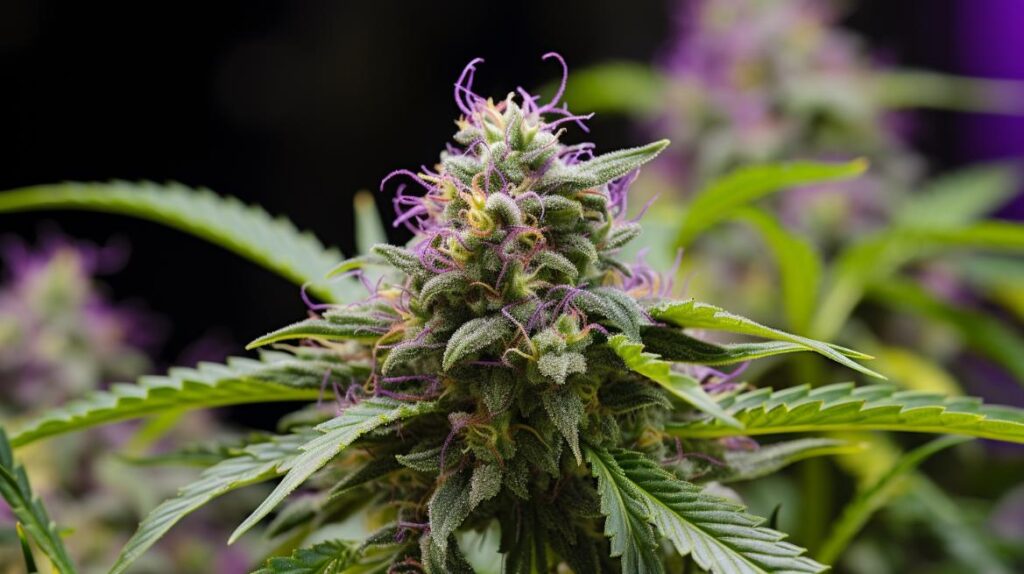
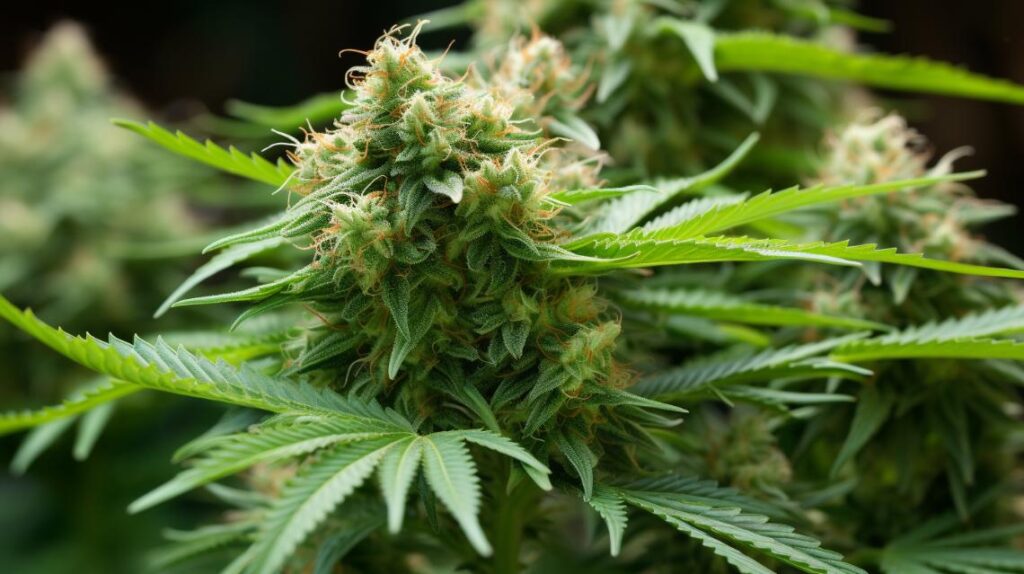
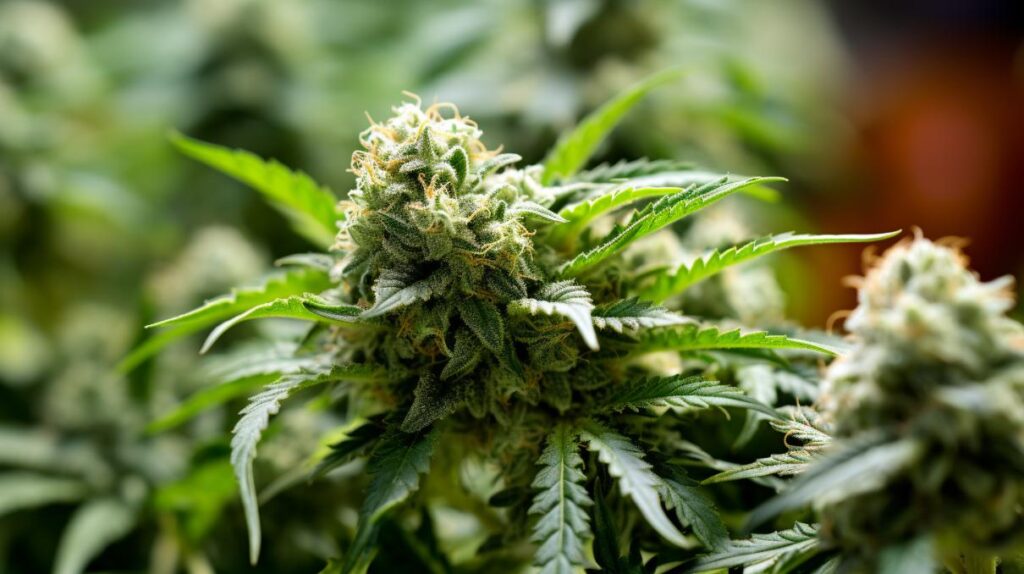
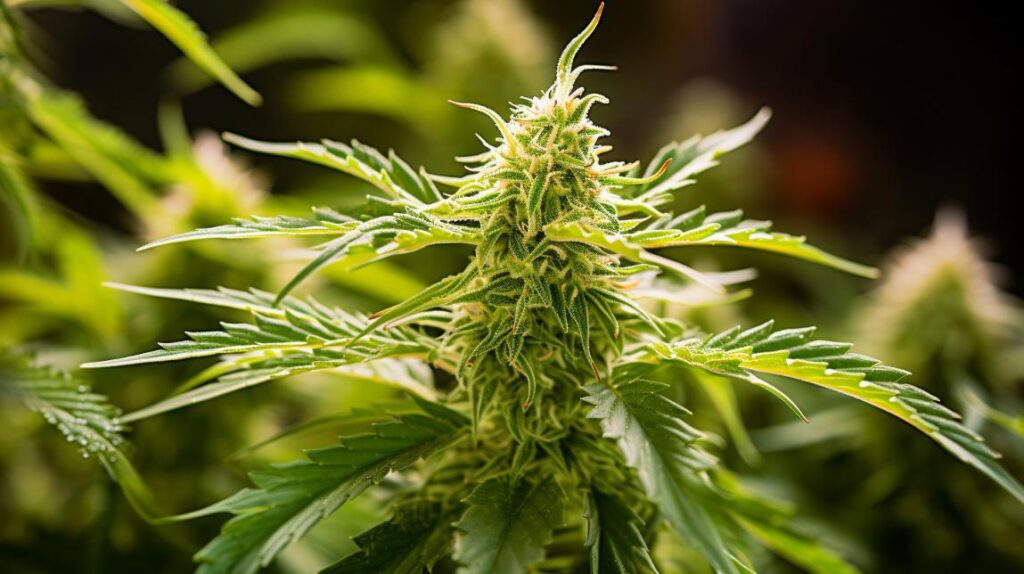
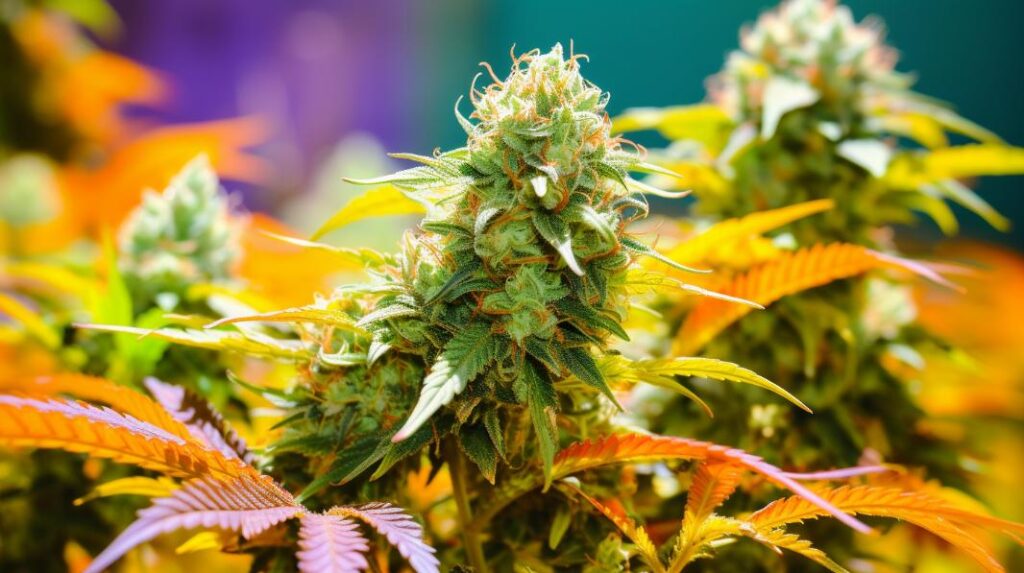

Responses